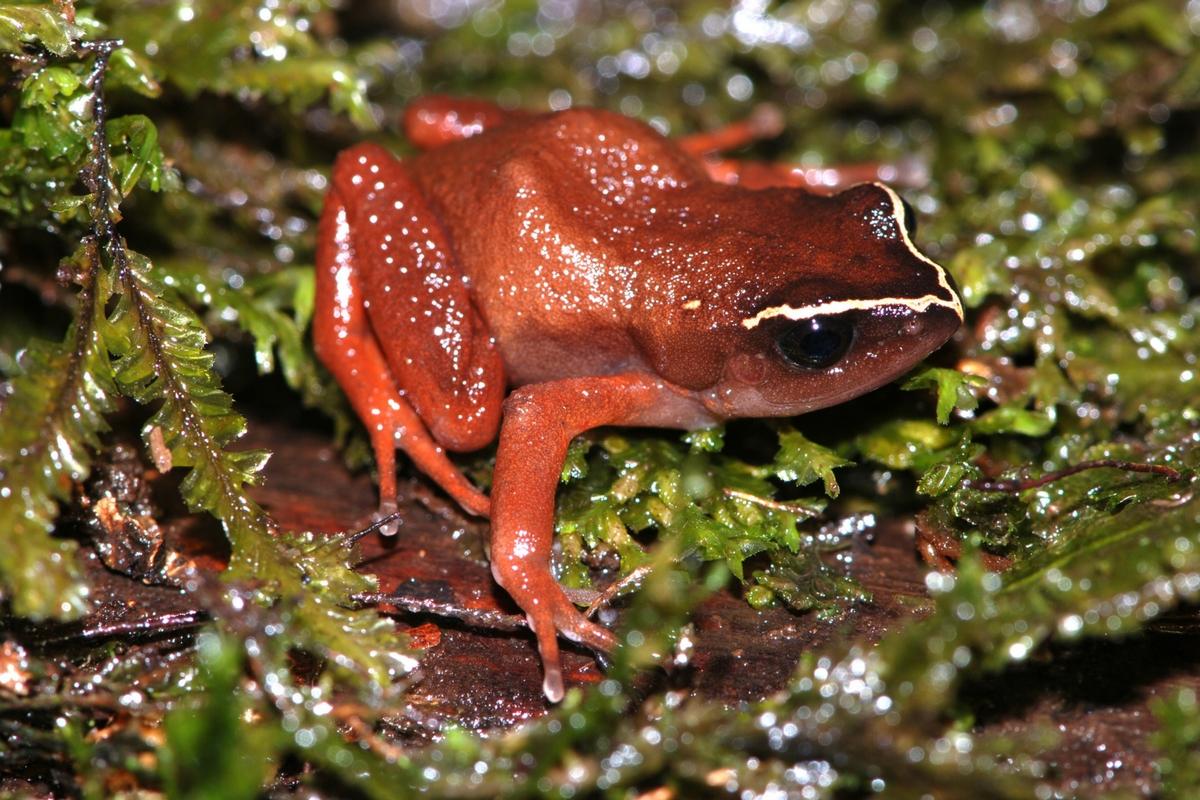Amphibians are today the most endangered land vertebrates. The degree of endangerment of a species is not random, but is determined, among other things, by its morphological and ecological properties. Especially many endangered amphibian species can be found among those who need flowing waters. Researchers from the Museum für Naturkunde Berlin have now been able to show with fossil data that this relationship between habitat and extinction risk has changed over the course of the earth's history, the current flowing water dwellers were formerly the winners. One of the reasons could be the human influence on ecosystems.
In order to examine the general impact of the habitat on the potential threat to an amphibian species, Melanie Tietje and Mark-Oliver Rödel from the Berlin Museum of Natural History have analysed the survival times of extinct amphibian species and their habitats over the last 300 million years. The lifespan of one species was derived from the period between the oldest and most recent fossil finds of a species and was used by the researchers as a fossil counterpart to the degree of endangerment of species living today. The latter was investigated and published for all living amphibians in the IUCN Red List (International Union for the Conservation of Nature and Natural Resources). This Red List also mentions the habitat of the species. The two researchers have derived the habitat of fossil species from the lithology, i.e. the characteristics of the rock surrounding the fossil. That way each fossil got assigned a specific habitat type, from standing to fast-flowing waters.
When comparing the lifespan of species from different water body types, the researchers found that amphibian species from waters with high flow velocities showed an on average longer lifespan than species from waters with low (or none) flow velocity. The results could not be explained either by habitat-related differences in the preservation of fossils, or by differences between amphibian groups, e.g. frogs and salamanders. The fact that species from flowing water bodies showed longer lifetimes is contrary to the data of the Red List of IUCN. These show that living stream- and river inhabitants are more threatened with extinction compared to inhabitants of standing waters. This seemingly contradictory influence of the habitat on the observed (fossil) and expected (living) lifespan of a species might indicate that habitats have changed differently, and partly to the detriment of their inhabitants. The highly concentrated settlement by humans in the close proximity to rivers would be a possible explanation. As Melanie Tietje, a doctoral student at the Museum für Naturkunde Berlin adds, "is this an example that shows that it might be important to consider developments over long time periods for a more comprehensive, fundamental understanding of risk factors. Therefor the fossil report provides a great archive of various species and extinction events."
Publication: Contradicting habitat type-extinction risk relationships between living and fossil amphibians
Melanie Tietje, Mark-Oliver Rödel
R. Soc. open sci. 2017 4 170051; DOI: 10.1098/rsos.170051. Published 10 May 2017
